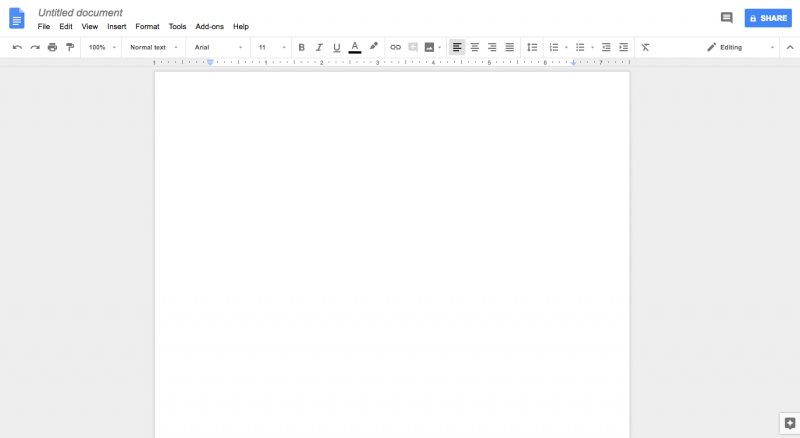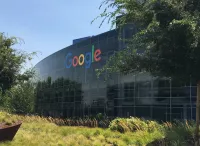Gmail, Google's email service, boasts 1.5 billion active users globally as of 2019, securing its position as the world's leading email platform. Users can access its webmail interface via web browsers or the official mobile app. Gmail also supports third-party email client integration through POP and IMAP protocols.
April 1, 2004: Gmail Launches with 1GB of Storage
On April 1, 2004, Gmail was launched, offering a groundbreaking 1 gigabyte of storage space, a feature that significantly outstripped the offerings of its competitors.
May 2004: Gamil Design Experiences Traffic Surge Due to Gmail's Popularity
In a case of mistaken identity, Gamil Design, a product and graphic design firm, saw a significant surge in website traffic in May 2004 due to the rising popularity of Gmail. The similar-sounding names led to many users mistyping "Gmail" and landing on Gamil Design's website. This unintended consequence highlighted the impact of Gmail's growing user base and the importance of brand name distinctiveness in the digital age.
2004: Gmail Launches with Unprecedented Storage Capacity
Gmail was launched in 2004, offering an unprecedented 1 gigabyte of storage per user, a significant leap compared to its competitors at the time.
2004: Gmail's Early Development Under Code Name Caribou
In 2004, Gmail, initially known as Caribou, was being developed in secrecy, hidden from most Google engineers. This period marked the project's nascent stages, with a strong emphasis on confidentiality.
2004: Privacy and Civil Liberties Groups Raise Concerns Over Gmail's Privacy Policies
In 2004, concerns were raised by 31 privacy and civil liberties organizations regarding Gmail's privacy practices. They wrote a letter to Google urging the suspension of Gmail until privacy issues, such as data retention, sharing policies, and the scanning of emails for ad placement, were adequately addressed. These concerns highlighted the emerging debate surrounding user privacy in the digital age.
April 1, 2005: Gmail Doubles Storage Capacity on First Anniversary
On April 1, 2005, marking its first anniversary, Gmail doubled its storage capacity to 2 gigabytes per user, with Georges Harik, the product management director, emphasizing the commitment to providing users with ample storage space.
2005: Gmail Receives Accolades and Recognition for Innovation and Design
In 2005, Gmail garnered significant recognition for its innovation and user-friendly design. It was ranked second in PC World's "100 Best Products of 2005," highlighting its impact and popularity. Additionally, Gmail received an 'Honorable Mention' in the Bottom Line Design Awards 2005, further affirming its design excellence.
September 2006: Forbes Names Gmail the Best Webmail Application for Small Businesses
In September 2006, Gmail's appeal to the business sector was acknowledged when Forbes magazine declared it the best webmail application for small businesses. This recognition highlighted Gmail's suitability for meeting the communication needs of smaller enterprises.
November 2006: Gmail Earns a 4-Star Rating from PC World
Gmail continued to impress reviewers, receiving a prestigious 4-star rating from PC World in November 2006. This high rating underscored Gmail's overall quality and user satisfaction.
November 2006: Gmail Launches Java-Based Mobile Application
November 2006 saw Gmail expanding its reach by introducing a Java-based application designed for mobile phones, making email access more convenient.
October 2007: Gmail Undergoes Code Rewriting for Enhanced Speed and Features
In October 2007, Gmail embarked on a significant upgrade by rewriting parts of its codebase. This move aimed to boost the service's speed and introduce new functionalities like custom keyboard shortcuts and the ability to bookmark messages and searches, demonstrating a commitment to improving user experience. Additionally, Gmail implemented IMAP support, allowing users to manage their email with other email clients.
October 2007: Gmail Increases Storage to 4GB Amidst Competition
In October 2007, Gmail expanded its storage capacity to 4 gigabytes, responding to competitive pressure from rivals like Yahoo and Microsoft who were also increasing storage limits.
2007: Cross-Site Scripting Vulnerability Fix
Google addressed a cross-site scripting security vulnerability in Gmail in 2007. This vulnerability could have potentially allowed attackers to steal information from users' Gmail contact lists.
January 2008: Gmail's JavaScript Update Disrupts Third-Party Scripts
Gmail's update in January 2008, involving changes to its JavaScript implementation, inadvertently led to the malfunctioning of some third-party scripts used by users. Google acknowledged this unintended consequence and actively assisted affected users with workarounds, highlighting their commitment to addressing technical issues promptly.
June 5, 2008: Gmail Labs Launches, Empowering Users to Test Experimental Features
Launched on June 5, 2008, Gmail Labs provided users with the opportunity to experiment with new and experimental features, offering feedback to help Gmail engineers refine and assess the popularity of potential additions.
July 2008: Simplified HTTPS Activation
In July 2008, Google made it easier for users to enable secure HTTPS mode in Gmail. Previously, switching to HTTPS was possible within the inbox but involved a manual process. Google simplified this by introducing a toggle in the settings menu.
May 2009: Gmail's "On Behalf Of" Tag Raises Transparency Concerns
In May 2009, Gmail's practice of adding an "on behalf of" tag to emails sent from external addresses within Gmail sparked debate. The tag, intended to prevent emails from being flagged as spam, raised transparency concerns as it revealed to recipients that the sender was using Gmail. Google later introduced an option to remove the tag by routing emails through the external email provider's servers.
July 7, 2009: Gmail Exits Beta Phase
After a period of extensive testing and refinement, Gmail reached a significant milestone on July 7, 2009, by officially exiting its beta status. This transition marked a significant step in the evolution of Gmail, signifying its maturity and readiness for widespread adoption.
2009: Gmail Experiences Multiple Outages, Raising Concerns About Reliability
During 2009, Gmail suffered at least seven outages, raising concerns among users about the service's reliability. These outages highlighted vulnerabilities in Gmail's infrastructure and prompted discussions about the platform's stability.
2009: Google Addresses Gmail Outages, Emphasizes Service Reliability
In response to concerns about multiple Gmail outages in 2009, Google issued a statement emphasizing the service's overall reliability. Google claimed that Gmail remained accessible to users over 99.9% of the time and committed to minimizing such incidents.
January 2010: HTTPS as Default
Enhancing user security and privacy, Google started rolling out HTTPS as the default protocol for all Gmail users in January 2010.
January 2010: Google Reveals Sophisticated Cyberattack Targeting Chinese Activists
In January 2010, Google announced a "highly sophisticated" cyberattack originating from China that targeted Gmail accounts of Chinese human rights activists. The attack also impacted accounts of activists from other countries and various industries. Google took steps to enhance its infrastructure security and advised users on security measures.
February 9, 2010: Google Buzz Integration
On February 9, 2010, Google launched its social networking platform, Google Buzz, integrated with Gmail. This integration allowed users to share links, media, and status updates directly from their Gmail accounts.
February 2010: Google Buzz Launch Raises Privacy Concerns
The February 2010 launch of Google Buzz, a social networking platform integrated with Gmail, was met with immediate criticism for its privacy settings. The default settings publicly shared details of users' contacts, raising concerns about user privacy.
August 2010: Integrated Telephone Service
August 2010 saw Gmail introduce an integrated telephone service within its Google Chat interface. While lacking an official name initially, Google referred to it as both "Google Voice in Gmail chat" and "Call Phones in Gmail." This service proved immensely popular, logging over a million calls within the first 24 hours.
February 28, 2011: Gmail Suffers Outage Causing Accounts to Appear Empty
On February 28, 2011, Gmail experienced an outage due to a bug that caused user accounts to appear empty. Google assured users that no emails were lost and that restoration efforts were underway.
March 2011: Former Gmail User Files Lawsuit Alleging Privacy Violation Over Email Scanning
In March 2011, a former Gmail user based in Texas filed a lawsuit against Google alleging that Gmail's practice of scanning email messages to deliver targeted advertising violated user privacy, igniting further debate on the balance between personalization and privacy in email communication.
August 2011: Gmail Offline Launch
In August 2011, Google launched "Gmail Offline," an HTML5-based app that allows users to access Gmail without an internet connection. This app is available for download from the Chrome Web Store and is designed for use with the Google Chrome browser.
October 2011: Google Buzz Discontinuation
Following the launch of Google+, Google's new social networking platform, Google Buzz was discontinued in October 2011. Features from Google Buzz were integrated into Google+.
November 2011: Gmail Redesigns Interface for a Minimalist Look
November 2011 saw Google begin to roll out a redesigned Gmail interface, embracing a cleaner and more minimalist design to align with the company's overall aesthetic across its products and services.
December 2011: Google+ Integration
In December 2011, Gmail was integrated with Google+, aiming to centralize all Google services under one Google account with a unified Google+ profile. However, this integration faced backlash from users.
March 2012: Gmail Completes Transition to Redesigned Interface
In March 2012, Google finalized the transition to the new Gmail interface, discontinuing the option to revert to the old design, marking a significant visual overhaul for the email service.
April 17, 2012: Gmail Experiences Service Disruption
On April 17, 2012, Gmail faced another outage, causing temporary service disruptions for users.
April 24, 2012: Gmail Storage Increases to 10GB with Google Drive Integration
Gmail's storage capacity increased from 7.5 to 10 gigabytes on April 24, 2012, as part of the launch of Google Drive, showcasing a growing integration between Google's services.
May 2012: Gmail Enhances Search with Auto-Complete Predictions
May 2012 saw Gmail enhance its search functionality by integrating auto-complete predictions based on the user's emails, improving search efficiency.
June 2012: State-Sponsored Attack Protection
In June 2012, Gmail implemented a security feature designed to protect users from state-sponsored attacks. This feature included a banner notification at the top of the page, alerting users to any unauthorized account compromises.
June 2012: Gmail Reaches 425 Million Active Users Globally
In June 2012, Gmail reached a remarkable milestone by surpassing 425 million active users worldwide. This achievement solidified its position as a leading email provider and demonstrated its widespread global adoption.
July 2012: Class Action Lawsuits Target Gmail's Email Handling Practices
In July 2012, Gmail's email handling practices faced further legal scrutiny when residents of California filed two class-action lawsuits against Google (and Yahoo!). The lawsuits alleged that the companies unlawfully intercepted emails sent from non-Gmail and non-Yahoo! addresses to Gmail and Yahoo! recipients without the senders' consent or knowledge. Notably, a motion submitted by Google's legal team during the case conceded that Gmail users should not expect privacy, further fueling the debate on email privacy.
October 2012: Gmail Integrates Diverse Virtual Keyboards and Input Methods
In October 2012, Google enriched Gmail's functionality by adding over 100 virtual keyboards, transliteration tools, and input method editors, enabling users to communicate in various languages and scripts beyond the limitations of their physical keyboards.
May 13, 2013: Unified Storage for Gmail, Drive, and Google+ Photos
On May 13, 2013, Google unified the storage across Gmail, Google Drive, and Google+ Photos, providing users with a shared 15 gigabytes of storage.
May 2013: Gmail Introduces Inbox Tabs for Categorization
In May 2013, Gmail introduced inbox tabs, offering users the ability to categorize their emails into five categories: Primary, Social, Promotions, Updates, and Forums, while retaining the option to disable the feature and revert to the traditional inbox layout.
May 2013: Lawsuit Prompts Google to Explain Its Position on Gmail User Privacy
In May 2013, a lawsuit prompted Google to articulate its stance on the privacy of Gmail users. This event highlighted the growing concerns over data privacy and transparency in email communication.
May 2013: Google Wallet Integration
May 2013 saw Google introduce an integration between Google Wallet and Gmail, allowing users to send money as email attachments. While senders needed a Gmail account, recipients did not, and the feature was initially only available on the web version of Gmail.
August 15, 2013: Google Addresses Gmail Privacy Concerns, Emphasizing Commitment to User Privacy and Security
On August 15, 2013, amidst ongoing privacy concerns, a Google spokesperson addressed the media, emphasizing that the company took the privacy and security of Gmail users very seriously. This statement aimed to reassure users and mitigate the controversy surrounding Gmail's data handling practices.
August 2013: Court Filing Reveals Google's Stance on Gmail User Privacy
In August 2013, a court filing brought to light by Consumer Watchdog, an advocacy group, revealed that Google asserted in a legal document that Gmail users should not have a "reasonable expectation" of privacy regarding their emails. This revelation stemmed from a lawsuit filed in May 2013 and further ignited the controversy surrounding Gmail's data handling practices.
September 24, 2013: Gmail Hit with Outage, Causing Service Interruptions
Gmail experienced an outage on September 24, 2013, leading to service interruptions for users.
October 2013: Handwriting Input Support
In October 2013, Google added the option for users to input text into Gmail using handwriting.
December 2013: Gmail Changes Image Handling, Sparking Privacy Debate
In December 2013, Gmail altered its image handling practices, enabling images to display without requiring user approval, citing enhanced security measures. This change meant that images were now routed through Google's secure proxy servers. While this boosted security, it also raised concerns about user privacy, as marketers lost the ability to track IP addresses and device information. However, it also enabled senders to track email open rates via image loading callbacks. This event marked a pivotal shift in Gmail's approach to balancing user experience and privacy considerations.
2013: Microsoft Targets Google's Email Privacy Practices in Ad Campaign
In 2013, Microsoft launched an advertising campaign criticizing Google's practice of scanning email content for targeted advertising. Microsoft emphasized that its Outlook email service did not engage in such practices, highlighting privacy as a vulnerability for Google. Google defended its practices, stating that an automated algorithm, rather than human review, determined ad relevance and emphasized the safety and relevance of its ads.
January 2014: New Gmail Feature Raises Privacy Concerns Similar to Google Buzz
In January 2014, Gmail introduced a feature allowing users to email individuals with Google+ accounts without knowing their email addresses. This feature drew criticism, with comparisons to the Google Buzz privacy flaw, as it raised concerns about user privacy and consent.
January 24, 2014: Gmail Users Face Service Disruptions During Outage
On January 24, 2014, Gmail encountered an outage, resulting in service disruptions for users.
March 2014: Google Hangouts Integration
In March 2014, Google discontinued Google Voice within Gmail, replacing it with features from Google Hangouts, its other communication platform.
March 2014: Full Email Encryption in Transit
Reinforcing data security, in March 2014, Google announced that all Gmail emails would be sent and received using an encrypted HTTPS connection. This ensured that 100% of email messages were encrypted while being transmitted within Google's internal systems.
April 2014: Gmail Updates Terms of Service to Enhance Transparency Regarding Email Content Scanning
In April 2014, Gmail updated its terms of service to provide users with greater transparency regarding the scanning of email content. The revised terms explicitly stated, "Our automated systems analyse your content (including emails) to provide you personally relevant product features, such as customised search results, tailored advertising, and spam and malware detection. This analysis occurs as the content is sent, received, and when it is stored." This move aimed to address privacy concerns and provide users with a clearer understanding of Gmail's data handling practices.
May 2014: Gmail Becomes the First App on Google Play Store to Hit One Billion Installations
In May 2014, Gmail achieved another remarkable milestone by becoming the first application on the Google Play Store to reach an astounding one billion installations on Android devices, marking a significant achievement in the mobile app landscape.
August 2014: International Character Support
In August 2014, Gmail took a step towards greater inclusivity by becoming the first major email provider to enable sending and receiving emails with accent marks and characters from beyond the Latin alphabet.
August 2014: Gmail's Business Adoption Trends Among Different Company Sizes
In August 2014, research by Quartz shed light on Gmail's adoption trends across various business sectors in the United States. The study, which examined 150 companies across Fortune 50, mid-size tech and media, and startups from Y Combinator, revealed that while only one Fortune 50 company (Google itself) used Gmail, a significant portion of mid-sized (60%) and startup (92%) companies had embraced Gmail, demonstrating its strong appeal among smaller and more agile businesses.
October 2014: Security Key for Two-Step Verification
In October 2014, Gmail users were given the option of using a physical security key as a more robust method for two-step verification, further bolstering account security.
October 2014: Inbox by Gmail Launch
In October 2014, Google introduced "Inbox by Gmail" on an invitation-only basis. This service, developed by the Gmail team as a separate entity, aimed to simplify email management, offering features such as automatic email bundling by topic, key information highlighting, and reminders, assists, and snoozing options.
November 2014: Non-Gmail Account Integration on Android
Expanding its functionality, in November 2014, the Gmail Android app allowed users to manage emails from non-Gmail accounts (such as Yahoo! Mail or Outlook.com) using POP or IMAP protocols.
March 2015: Gmail Expands Language Support to 72 Languages
By March 2015, the Gmail interface had expanded its language support to encompass 72 languages, reflecting a commitment to global accessibility and inclusivity.
May 2015: Inbox by Gmail Public Launch
After a period of invitation-only access, Inbox by Gmail was made available to the public in May 2015.
May 2015: Gmail Surpasses 900 Million Active Users, with 75% on Mobile Devices
By May 2015, Gmail's user base surged to an impressive 900 million active users, highlighting its continued growth and dominance in the email market. Notably, 75% of these users accessed Gmail via mobile devices, emphasizing the increasing importance of mobile platforms.
July 2015: Google+ Requirement Removal
Responding to user feedback, Google revised its policy in July 2015, no longer requiring a public Google+ profile for Gmail. Users could maintain a private Google account without a public-facing profile.
February 2016: Gmail Crosses the 1 Billion Active Users Mark
In February 2016, Gmail achieved a historic milestone by surpassing 1 billion active users globally. This remarkable achievement cemented its status as one of the most widely used email services worldwide.
June 2016: Google Updates Privacy Policy, Raising Concerns About Data Merging
In June 2016, Google's updated privacy policy sparked concerns as it removed a clause that prevented the company from combining DoubleClick browsing data with personal information from other services. This change allowed Google to create unified ad profiles by merging user data, raising privacy concerns. While Google assured users that Gmail keywords wouldn't be used for ad targeting, the policy update raised concerns about data privacy and transparency.
September 2016: Google Trips Launch
Google launched Google Trips, an app that used information from users' Gmail messages to generate travel cards. These cards contained details like itineraries, plane tickets, and recommendations for activities and dining based on location and interests, and offered offline functionality.
November 2016: Gmail for iOS Redesign
November 2016 marked the most substantial redesign of the Gmail app for iOS in years. The update focused on a more visually appealing experience with a vibrant color palette, smoother transitions, and introduced several sought-after features, including an "Undo Send" option, quicker search with instant results and spelling recommendations, and a convenient "Swipe to Archive/Delete" feature.
March 2017: Gmail Increases Maximum Email Size Limit
In March 2017, Gmail increased the maximum email size limit for receiving messages to 50 megabytes, while the sending limit remained at 25 megabytes, and introduced the ability to insert files from Google Drive for larger attachments.
March 2017: Google Wallet Integration on Android
In March 2017, Google expanded the Google Wallet integration to the Gmail Android app for users in the United States.
April 2017: Google Trips Update
In April 2017, Google Trips received a significant update. The app could then scan Gmail for bus and train tickets, allowed manual trip reservation input, enabled trip detail sharing via email, and automatically updated shared trips in recipients' Google Trips apps.
May 2017: Machine Learning for Spam and Phishing Detection
In May 2017, Google announced the integration of machine learning technology in Gmail to enhance its ability to identify and filter spam and phishing emails, achieving a remarkable 99.9% detection accuracy. This implementation marked a significant advancement in Gmail's security measures.
May 2017: Phishing Protection for Android
In May 2017, Google updated Gmail on Android by incorporating phishing attack protection. Notably, this update coincided with a large-scale phishing campaign targeting Gmail users through Google Docs, making the timing of the security enhancement particularly significant.
June 2017: Gmail Ends Contextual Advertising
In June 2017, Google ceased using Gmail content for targeted advertising, opting instead to leverage data collected from other services, a move that followed significant criticism from privacy advocates concerned about data retention and potential monitoring.
June 23, 2017: Google Announces the End of Email Content Scanning for Gmail Ads
On June 23, 2017, Google officially announced that it would discontinue the practice of scanning email content for targeted advertising purposes in Gmail. This decision, to be implemented later that year, aimed to address privacy concerns and streamline its advertising approach by relying on personal data gathered from other Google services. The move was partly driven by the need to clarify data handling practices for enterprise G Suite (now Google Workspace) customers who were not subject to advertising in their paid versions.
July 2017: Gmail's User Base Exceeds 1.2 Billion
By July 2017, Gmail's user base continued its impressive growth, exceeding 1.2 billion active users. This milestone further solidified Gmail's position as the leading email provider globally.
2017: Gmail Phases Out Email Content Scanning for Contextual Advertising
In 2017, Gmail announced a significant change in its advertising practices: it would phase out the scanning of email content for generating contextual advertising. This decision was made to address privacy concerns and clarify its data usage policies, particularly for enterprise customers using G Suite (now Google Workspace).
April 2018: Gmail Unveils New Web UI with Material Design
April 2018 witnessed Gmail introduce a new web user interface based on Google's Material Design principles, featuring the Product Sans font and incorporating updates such as Confidential mode for sensitive messages, integrated rights management, and two-factor authentication.
April 2018: Gmail Revamps Spam Filtering Banners
The April 2018 Gmail update included a redesign of the spam filtering banners, featuring larger, bolder lettering for increased prominence.
August 15, 2018: Google One Launches, Offering Expanded Storage Options
Google One was launched on August 15, 2018, enabling users to purchase additional storage through monthly subscriptions, shared across Gmail, Google Drive, and Google Photos.
September 2018: Inbox by Gmail Discontinuation Announcement
Google announced in September 2018 that it would be discontinuing Inbox by Gmail in March 2019.
January 29, 2019: Gmail Plagued by Outage, Disrupting Email Services
Gmail was hit by an outage on January 29, 2019, causing disruptions to email services for users.
March 2019: Inbox by Gmail End of Service
March 2019 marked the end of service for Inbox by Gmail.
April 2, 2019: Inbox by Gmail Discontinued
Despite its innovative features and popularity, Inbox by Gmail was discontinued on April 2, 2019. Many of its features were integrated into the standard Gmail service.
April 2019: Inbox by Gmail Discontinuation
Inbox by Gmail, a separate app developed by the Gmail team for iOS and Android devices, was discontinued in April 2019.
2019: Gmail Reaches 1.5 Billion Active Users
In 2019, Gmail solidified its position as the largest email service globally, boasting an impressive 1.5 billion active users.
2019: Dark Mode and Third-Party Access
In 2019, Google introduced a dark mode option for its mobile apps on Android and iOS. Furthermore, third-party applications gained access to Gmail using POP or IMAP protocols.
August 20, 2020: Gmail Experiences Widespread Outage, Impacting Users Globally
On August 20, 2020, Gmail suffered a widespread outage, impacting users worldwide and leading to disruptions in email access and delivery.
November 2020: Click-Time Link Protection
In November 2020, to combat malicious links, Google introduced click-time link protection in official Gmail clients. This feature added an extra layer of security by routing clicked links through Google's servers for verification.
November 2020: Gmail Enhances User Control Over Data and Smart Features
On November 16, 2020, Google announced new settings for Gmail, Chat, and Meet, empowering users with greater control over their data and the ability to manage smart features like Smart Compose and Smart Reply.
April 2021: Google Chat and Rooms Integrated into Gmail
In April 2021, Google expanded the availability of Google Chat and Rooms to all Gmail users, integrating these communication tools directly into the email service.
2021: Google Offers 15GB Free Storage, Paid Plans Up to 2TB
As of 2021, Google provided users with 15 gigabytes of free storage, with the option to upgrade to paid plans offering up to 2 terabytes for personal use, demonstrating the ongoing evolution of storage options.
July 2022: Gmail Adopts Material You Design Language
July 2022 marked the rollout of Google's Material You design language to all Gmail users, further refining the visual style and user experience.
January 2024: Basic HTML Version Discontinued
After many years of service, Gmail discontinued its "basic HTML" version in January 2024, which was compatible with almost all web browsers.
Mentioned in this timeline

Google Docs is a free web-based word processor offered by...

Google LLC is a multinational technology company specializing in online...
California is a U S state on the Pacific Coast...

Microsoft an American multinational technology corporation headquartered in Redmond Washington...
Google Hangouts a multi-platform instant messaging service by Google originated...
China officially the People's Republic of China PRC is an...
Trending

John Stamos is an American actor and musician who rose to fame as Blackie Parrish on General Hospital earning a...

9 months ago Ilia Malinin at Worlds, skating tribute and a skating club's tragic past.

Te fimo L pez is an American professional boxer who has held world championships in two weight classes He currently...

4 months ago Audit Questions Moore's Budget Claims, Scrutinizes Maryland Leases & Overpayments

Kumail Nanjiani is a Pakistani-American comedian and actor known for his roles in Silicon Valley and The Big Sick the...

2 months ago Lindsey Vonn's record-breaking career, teaching older athletes, and Milan Olympics ad.
Popular

Candace Owens is an American conservative political commentator and author...

Ilhan Omar is an American politician currently serving as the...

XXXTentacion born Jahseh Dwayne Ricardo Onfroy was a controversial yet...
Matt and Ross Duffer known as the Duffer Brothers are...

Tom Cotton is an American politician and Army veteran currently...
The Kennedy Center Honors are annual awards recognizing individuals and...